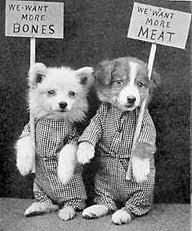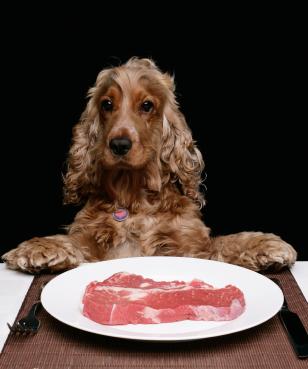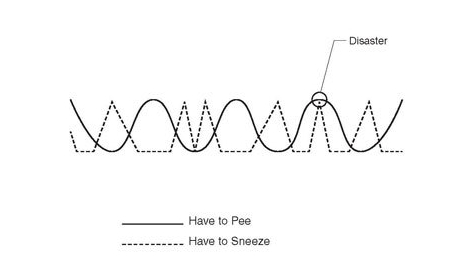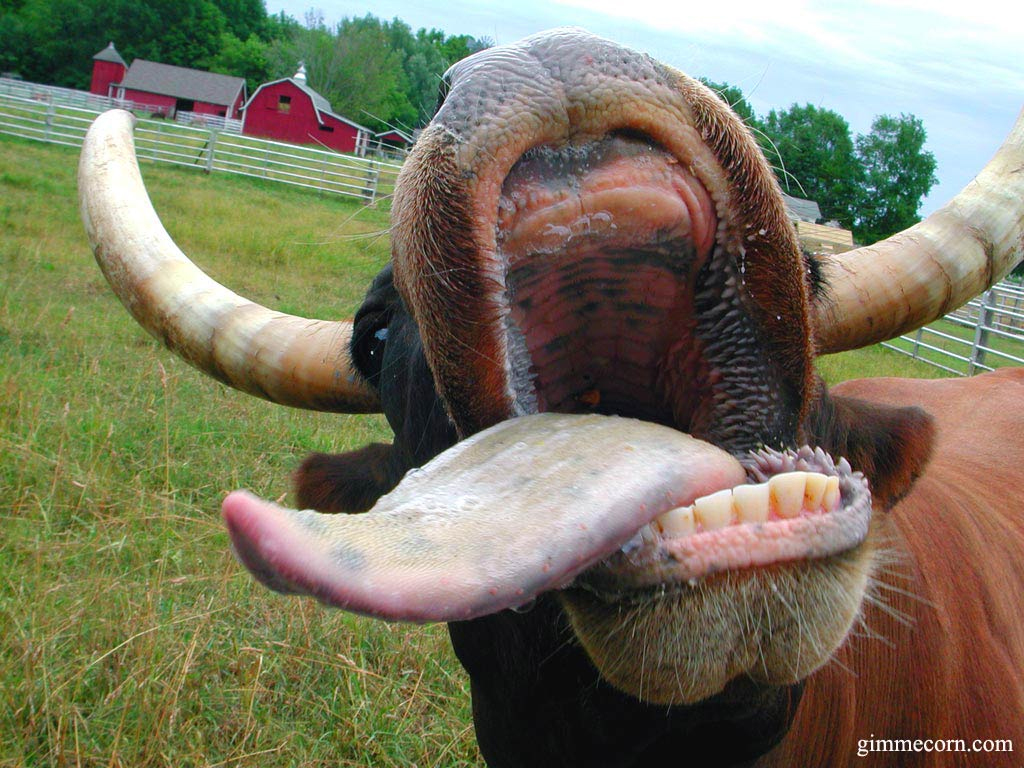The BARF diet is rooted in the philosophy that all things natural are good, and that science or human experience cannot improve on nature.
The Biologically Appropriate Raw Food, or Bones And Raw Food, diet, also known as the "prey model," in which owners try to feed their pets critters similar to what they’d  hunt in the wild, has resulted in a surge in illegal sales of raw wild game online, Florida wildlife investigators say.
hunt in the wild, has resulted in a surge in illegal sales of raw wild game online, Florida wildlife investigators say.
USA Today reports that in 2010, its first year, Florida Fish and Wildlife’s Internet Crimes Unit logged 177 arrests and 92 warnings for cases involving illegally buying or selling wildlife or raw game meat online, some of it for pets.
Pet owners go on Craigslist and eBay, asking where they can score a squirrel, pheasant, rabbit, goose, duck, chicken, just about any game to feed their cats and dogs. Some seek raw fish, meaty bones and organs such as hearts, livers and kidneys — everything a growing carnivore needs.
"It’s happening nationwide," said Lt. George Wilson, head of the Internet Crimes Unit. "The philosophy behind it is feeding your pet a hormone-free, naturally grazed diet.
"We’re seeing solicitations for wild ducks, anything wild."
The Internet provides a way around having to pay taxes or pay for licenses to sell wild game, investigators say.
But these Internet outlaws skirt regulations that ensure meat is sanitary and comes from  game hunted in-season. They threaten to create black markets for wildlife similar to what existed for alligators 50 years ago, Wilson said.
game hunted in-season. They threaten to create black markets for wildlife similar to what existed for alligators 50 years ago, Wilson said.
"It’s the unlicensed people that would be trafficking them," said Jim Deason, owner of Sweetwater Plantation, a farm in Bristol, Fla., that sells live deer for breeding. "Any of the people that I know, they’re pretty above board on things like that. If there’s anybody selling game, it’s probably going to be backwoodsy folks."



 didn’t know any better. Then I read a couple of books. One of them was called How Chickens Are Raped Before You Eat Them. Another was called Hotdogs and Fingertips. I also read The Cow Feces Dilemma as well as Barf, STDs, and Veal. These books, and my girlfriend who made me read them, really motivated me to become a "Vegetarian."
didn’t know any better. Then I read a couple of books. One of them was called How Chickens Are Raped Before You Eat Them. Another was called Hotdogs and Fingertips. I also read The Cow Feces Dilemma as well as Barf, STDs, and Veal. These books, and my girlfriend who made me read them, really motivated me to become a "Vegetarian."
 hunt in the wild, has resulted in a surge in illegal sales of raw wild game online, Florida wildlife investigators say.
hunt in the wild, has resulted in a surge in illegal sales of raw wild game online, Florida wildlife investigators say. game hunted in-season. They threaten to create black markets for wildlife similar to what existed for alligators 50 years ago, Wilson said.
game hunted in-season. They threaten to create black markets for wildlife similar to what existed for alligators 50 years ago, Wilson said. If only Monsanto didn’t genetically-engineer seeds …
If only Monsanto didn’t genetically-engineer seeds ….jpg) It’s no secret. The obesity epidemic is still raging in the United States. Documentaries such as
It’s no secret. The obesity epidemic is still raging in the United States. Documentaries such as  Diet Coke Plus has just come under fire for using the word “plus” in their product name. According to the FDA, Diet Coke Plus is “misbranded … because the product makes a nutrient content claim but does not meet the criteria to make the claim.” Muhtar Kent, the President and Chief Executive Officer of The Coca-Cola Company received a
Diet Coke Plus has just come under fire for using the word “plus” in their product name. According to the FDA, Diet Coke Plus is “misbranded … because the product makes a nutrient content claim but does not meet the criteria to make the claim.” Muhtar Kent, the President and Chief Executive Officer of The Coca-Cola Company received a 
 I’ve just started my first year of
I’ve just started my first year of 
 Students who ate from more food groups for their morning meal scored higher on a child behaviour checklist, with an improvement in mood seen for every extra food type added.
Students who ate from more food groups for their morning meal scored higher on a child behaviour checklist, with an improvement in mood seen for every extra food type added. "It didn’t matter what they added, just that they added something different like a banana to their cereal to make that meal more complete with vitamins and minerals. From what we found, that makes a huge difference."
"It didn’t matter what they added, just that they added something different like a banana to their cereal to make that meal more complete with vitamins and minerals. From what we found, that makes a huge difference." Volunteers were put on a stone-age diet of berries, nuts, lean meat, fish and vegetables while cutting out cereals, dairy products and refined sugar.
Volunteers were put on a stone-age diet of berries, nuts, lean meat, fish and vegetables while cutting out cereals, dairy products and refined sugar.